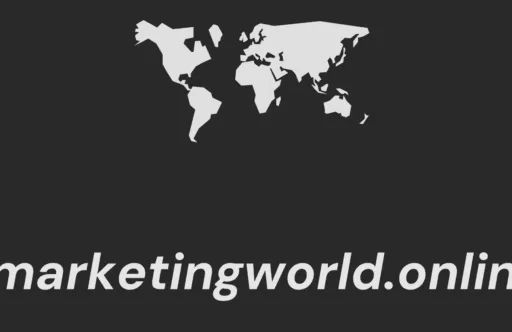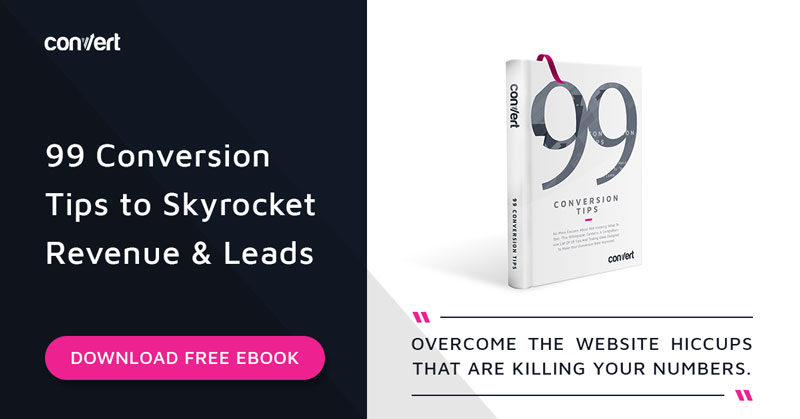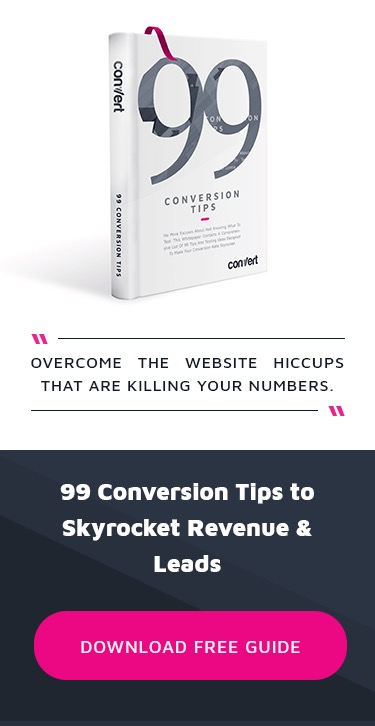Conversion-Centered
Design (CCD) goals to transform website guests to prospects by specializing in person
expertise (UX).
The connection between CRO and UX was not all the time clearly established. It was beforehand thought that CRO and UX had been competing targets that would not be reconciled. This concept not applies as a result of conversion-optimized internet design incorporates a concentrate on person expertise.
On this weblog submit, we’re going to discuss 5 Conversion Centered Design components that when added to the location expedite the longer term means of conversion price optimization by providing a strong basis to work from.
Conversion-Centered Design (CCD) & its
Affect on Web sites
Let’s again up a couple of paces and discuss Conversion-Centered Design. In case you are already very properly versed with the time period, then in all probability this weblog isn’t for you.
Nonetheless, in case you are testing the waters with CRO and don’t actually have a lot of an in-house design crew, then that is the useful resource you could stroll away with some AHA moments from.
Briefly Conversion Centered Design is design that takes under consideration the ideas of Consideration, Context, Readability, Congruence, Credibility, Closing and Continuance, in order that guests and browsers can simply discover a path of least resistance to the macro/micro purpose of the location or the touchdown web page.
Design that’s developed retaining these elements in thoughts is much less like a jungle of prospects and extra like a streamlined technique to get from level A (entry) to level B (conversion). It helps the purpose of Conversion Fee Optimization by eliminating unnecessary confusion from possible hypotheses and it affords higher conversion charges out of the gate typically. That’s the entire level of the train.
Conversion-centered design is handiest when it takes under consideration all elements of the customer’s journey. There are particular patterns and navigational flows which might be adopted throughout a buyer’s journey on a web site or app over their life cycle.
Maybe prime of the funnel leads go to blogs extra usually, whereas center of the funnel leads frequent free trial and pricing pages. As soon as these flows are established (recognized), it’s a matter of virtually mathematical precision to use the 7 ideas of CCD to all components in these flows.
Conversion-centered design absolutely takes the UI/UX of patrons under consideration. A web page that’s gradual to load or lags to course of request deters a conversion earlier than it even has an opportunity to start. A visually stimulating web page is equally as vital to the web page’s pace efficiency.
Listed here are 5 tried and examined Conversion Centered Design website components, plus the impression they’ve on conversion price optimization.
Web site Menu
The location menu is a vital factor of a web site for brand spanking new guests and frequent prospects. Making a website menu that’s clear and straightforward to entry makes website navigation faster. Navigation menus that use bigger fonts are usually simpler for guests to learn and perceive on any system.
Create relative classes for guests to filter and kind the location’s content material.
Utilization of drop-downs and website menus present entry to further info on sub-categories. Use all precautions to stop a website menu from showing too cluttered.
A fast scan is all of the dedication {that a} visitor allots the time for. The target right here is to load their desired content material as rapidly as attainable. Do NOT bombard them with each element at this stage. Much less is extra. Encourage them to discover additional with out presenting a unending listing of sub-categories directly. Embrace an intuitive search bar and filter choice.
Goal.com has 6 accessible navigation choices on their cell website menu: dwelling icon, classes, offers, search bar, sign-in, and procuring cart.
Take-Away: Bear in mind web page navigation is a method. Select which areas of the location that ought to be explored first and what choices ought to be introduced subsequent to information them alongside the conversion course of effortlessly. This removes evaluation paralysis and makes the number of a subsequent motion that rather more seemingly.
Name to Motion Button
The implementation of a name to motion is likely one of the most crucial elements of internet design to drive conversions.
Whereas most companies not deliberate over the colour of CTA buttons, or the cryptic (aggressive) textual content of “SUBMIT” … there may be extra to the artwork of call-to-action buttons than meets the attention.
Listed here are a couple of key pointers:
- CTA buttons are transitional in nature…they take leads from one half or stage of the customer’s journey to a different.
- They showcase the necessity to decide to your model – no matter the dimensions of the ask you make.
- They’ll affect the sentiment of the customer within the break up second it takes to decide to maneuver ahead or bounce off. For instance, lack of readability round what’s going to occur when a CTA button is clicked is likely one of the largest the reason why actions are left incomplete – like deserted procuring carts. The CTA button thus ought to be a mini worth proposition all by itself. It has to persuade browsers into taking motion, whereas being clear on the similar time.
The Cheescake Manufacturing facility’s “VIEW NOW” name to motion button guarantees visually pleasant photographs of pumpkin desserts (who doesn’t like these!) and in addition leaves little question within the individual’s thoughts as to what’s going to come subsequent.
Take-Away: Making use of the ideas of CCD mentioned on this part turns CTA buttons into handy stepping stones permitting folks to make their method down the funnel.
If they don’t want to take the journey onwards straight away, that’s okay too. The CTA buttons on exit intent pages ought to be handled with the identical respect and may supply an alternate plan of action to present extra worth to customers.
Inner Anchor Textual content Navigation and Predictive Search
A primary CRO technique to construct customer’s confidence as a website authority is maximized by means of content material.
Inner anchor textual content navigation gives guests with relative terminology and content material positioned throughout the domains’ website map.
No matter the subject material, offering responses to anticipated questions is an indication of expertise. Having these queries populate utilizing a predictive search bar for quick retrieval is right.
Many shoppers have come to anticipate predictive search capabilities when shopping by means of a web site as a result of its use has been pretty pervasive since Google launched it in 2004. Firms that promote merchandise can additional enhance the person expertise by incorporating image-supported predictive search as properly.
As an trade authority, Honeywell.com makes use of predictive search modeling for inside search engine inhabitants.
Take-Away: Remember guests are motivated to transform after having established belief. Giving them the correct start line by echoing the questions operating by means of their minds does two issues:
- It tells them that your model has fielded these queries previously and thus has expertise dealing with them.
- It tells them that they’ll discover viable options straight away (immediate gratification) without having to proceed their search any additional.
Pop-Up Reside Chat
Pop-up stay chats ought to be carried out as a method to answer the customer’s scrolling habits.
It is likely one of the handiest methods to have interaction with guests in real-time. Pop-ups are strategically triggered by the person’s on-page habits to point a want to collect info or ask a query a couple of services or products. Pop-up stay chats are attentive to scroll habits and fewer prone to interrupt a customer who’s simply opening up the web page and starting to soak up the data.
Cadillac.coms “CHAT NOW” pop-up is a chance for guests to launch real-time communication in regards to the content material on the web page.
Take-Away: Incorporate pop-up triggers based mostly on guests’ scroll habits. Use a scroll map to determine the place guests usually pause. That’s the space the place customers might have further assist and implement stay chat pop-ups for a conversion-centered webpage.
Earlier than You Go away
When monitoring the person’s habits there are typical indicators {that a} customer is getting ready to exit a webpage.
It’s customary to make use of an exit intent pop-up as a last-minute effort to transform.
CCD says that the headline of the exit pop-up should embrace a promotional supply that’s engaging sufficient to encourage a customer to observe by means of with filling out the shape. The sign-up type ought to request important contact info, equivalent to a primary identify and e mail handle.
It is very important embrace any required privateness disclaimers with the sign-up type, however the quantity and placement of the textual content shouldn’t detract from the decision to motion.
Zales.com gives an extra incentive to guests as a last-minute try to convert a sale.
Take-Away: Ensure that the contact type doesn’t require the person to enter an extreme quantity of knowledge. Together with a timer that counts right down to the expiration of a reduction supply creates a way of urgency for the customer to finish the shape.
Main with Conversion-Centered Design
Most manufacturers already make use of these ways in some type or the opposite. This isn’t a bid to re-acquaint them with what they already know.
As a substitute it’s a reminder that every of those components may be performed proper from the get go by following the ideas of Conversion Centered Design, and this further diligence can go a great distance in securing extra leads and income, particularly when utilized in tandem with Conversion Fee Optimization practices.
The top result’s merely “extra” to your model. Extra registrations, extra sign-ups and extra ROI from CRO drives … a minimum of at first.
Initially printed November 18, 2019 – Up to date July 17, 2024
Cell studying?
Authors

Sachin Sharma
Sachin Sharma is a Director of Operations and technical challenge supervisor that’s an trade skilled specializing in UI/UX, graphic design and animation.





